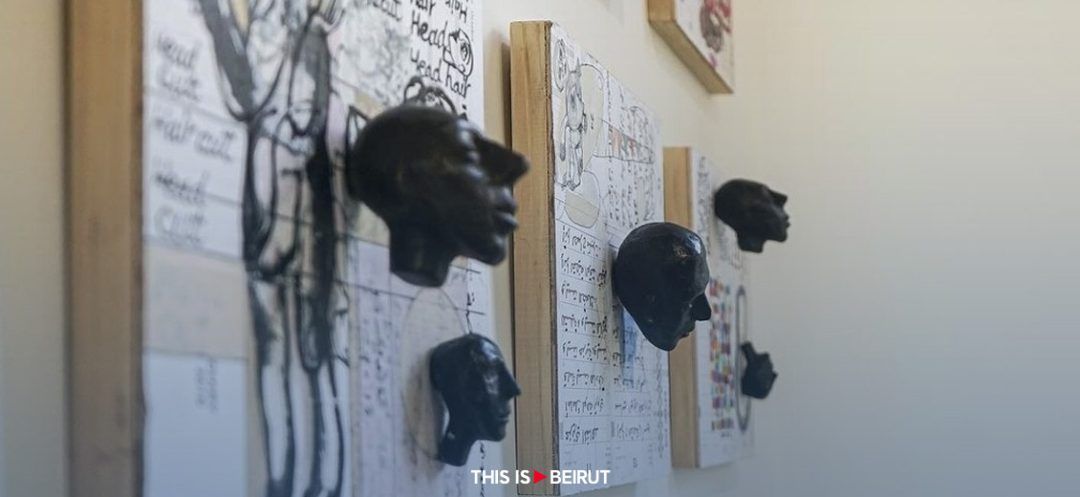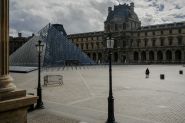
The exhibition 'No Title' by the painter and sculptor Fadi Yazigi at the Tanit Gallery, open from January 10th to February 16, 2024, sets the tone, inviting the spectator to immerse themselves in eloquent and poignant images. The canvases, brandished like a standard, testify to a history marked by wounds, presenting a form of art that is punchy and self-explanatory.
The works of Fadi Yazigi, a painter and sculptor of Syrian origins, feature in several public and private collections, including the British Museum in London and the Atassi Foundation in Dubai, as well as in the Middle East, Europe, and the United States. Yazigi’s style is semi-figurative, with expressionist or cubist elements reminiscent of Miro or Picasso, yet it stands out for its free brushwork and powerful expression. His works are a subtle blend of muted and resonant colors that clash and burst forth like a cry. Reds, greens, blues, whites, and blacks intermingle in a relentless struggle, revealing a tortured, discordant, and shattered artistic universe, reflecting a world ravaged by violence and conflict.
[gallery link="none" size="large" ids="216692,216694,216696,216697,216704"]
In his paintings, dismembered bodies and distraught, haggard faces confront the viewer, immediately drawing them into a specular, introspective dimension. The characters, hastily sketched, are presented in profile with one eye shown frontally, reminiscent of Egyptian figures from the Pharaonic period. This probing, accusatory gaze follows the viewer from one canvas to the next, echoing “the eye that was in the tomb and watched Cain.” Yazigi employs a rich language to weave stories with biblical undertones, such as depicting two characters fleeing with their donkey, evoking the image of Mary and Joseph heading to Bethlehem, or a decapitated head on a plate symbolizing the price of human greed.
His works, charged with symbolism, are also defined by portraits that repeat in a haunting litany, reflecting humanity in disarray, in search of the absolute. The figures in these works parade from canvas to canvas, creating a throbbing, incantatory rhythm akin to the almost hypnotic spinning dance of the Sufis. Arms and eyes rise to the sky like a prayer or soar towards an unknown destination. Emaciated or distorted faces, marred by tears or black strokes, stand as icons.
[gallery link="none" size="large" ids="216706,216695,216691,216703,216702"]
The circle, a symbol of the sacred and the infinite, is prevalent, outlining the contours of a head and parts of a body, transforming into a wheel, a plate, to underscore the spiritual dimension of being in its struggle with the material world. However, a sense of confinement and suffocation emanates from the entire body of work. The characters appear frozen within their frames, facing a blocked horizon, representing wasted potential and a compromised future. The artist uses thick black ink strokes or scribbles to create boxes, cases, or frames, enclosing various human or animal figures, such as horses or birds, in an inexorable compartmentalization.
Yazigi’s work thus emerges as an existential inquiry, a reflection on the human condition that shares his disillusionment with the waste and suffering in the Middle Eastern regions, engulfed in the infernal abyss of war and oppression. The bronze sculptures, with their frozen smiles, or a mummy riding a mount wrapped in a shroud, seem to belong to a realm of darkness and gravity. The same is true for the wall installation; large dice with heads on each side are arranged in a large box fixed to the wall, in a bitter portrayal of humanity adrift, caught between chance and self-destruction.
Fadi Yazigi casts a disenchanted look at the world, yet this gravity is often offset by lighter elements, thanks to the playful presentation of the installations, the ironic winks, or the smiles that occasionally appear on the canvases as signs of hope or resilience. This unique exhibition will captivate you, drawing you into a vibrant, inspiring universe, and despite its somber themes, it is tinged with light. It is a must-see, available until February 16, 2024.
Read more





Comments